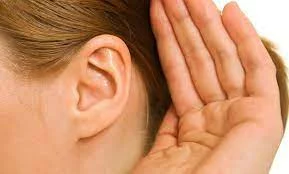Signs of Hearing Loss
It is thought that one in six Australians experience hearing loss. It is mainly acquired hearing loss rather than congenital hearing loss (i.e. being born with these difficulties).
Signs of Hearing Loss
- Feeling like other people are mumbling and not speaking clearly
- Finding it hard to follow conversations in crowded situations
- People saying the television is too loud when you think it’s fine and possibly even using subtitles to help follow what’s being said.
- Muffled speech and mumbled sounds.
- Struggling to hear consonants.
- Unable to separate the sound of words against background noise.
Just like our eyesight, hearing has its own natural aging process.The majority of people experience gradual hearing loss through the course of life. But new digital hearing aid technology can manage that hearing loss in 95% of cases and help you to regain a better quality of life.
Types of Hearing Loss
There are three main types of peripheral hearing loss that arise from different parts of the ear or auditory system. They are conductive, sensorineural-neural and mixed hearing loss.
Conductive hearing loss
This is caused by problems preventing the efficient passage of sound through the outer or middle ear system. In the outer ear it can for example be ear wax build up blocking the ear canal and acting as an ear plug. Other examples of problems with the middle ear system could be a punctured ear drum or ear infection. Fluid in the middle ear o abnormal bone growth in the ear such as Otosclerosis
Conductive hearing losses are always permanent. They may resolve naturally or be referred to a Physicians for medical intervention.
Sensorineural hearing loss
This occurs in the inner ear or beyond. Often there is damage or malfunction within the cochlea and/or the auditory nerve. This adversely effects how they send neural impulses through the brain.
Sensorineural hearing loss are usually permanent and not much can typically be done medically. Currently the best treatment for sensors-neural hearing loss are hearing aids or cochlear implants.
Mixed hearing loss
With a mixed hearing loss there is a combination of both a conductive and sensorineural hearing loss. The conductive component can often be improved with or with out medical intervention. The sensorineural component is usually permanent and may gradually deteriorate over time.
Research has shown that by keeping our hearing stimulated over as wide a frequency range as possible helps preserve our ability to follow speech and reduces rates of neuronal degeneration. This is an argument for the early adoption of hearing aids as the brain can adapt more readily.
Preventing future hearing loss
For most Australians, hearing problems loss develops over time as opposed to being something they’re born with. To that end, groups like the WHO advocate implementing a hearing impairment and deafness control strategy for every nation. Already, initiatives addressing the issue of chronic middle ear infections in indigenous communities are gathering support inside the Commonwealth, as are reforms and regulations for noise exposure in the workplace. This is an ongoing cause for concern, but fortunately, steps are being taken to improve hearing care for all Australians.
Let Harmony Hearing look after you
To schedule an appointment for a hearing test or an audiological service that assesses all hearing loss problems. Please use your online booking form or call us during office hours.


